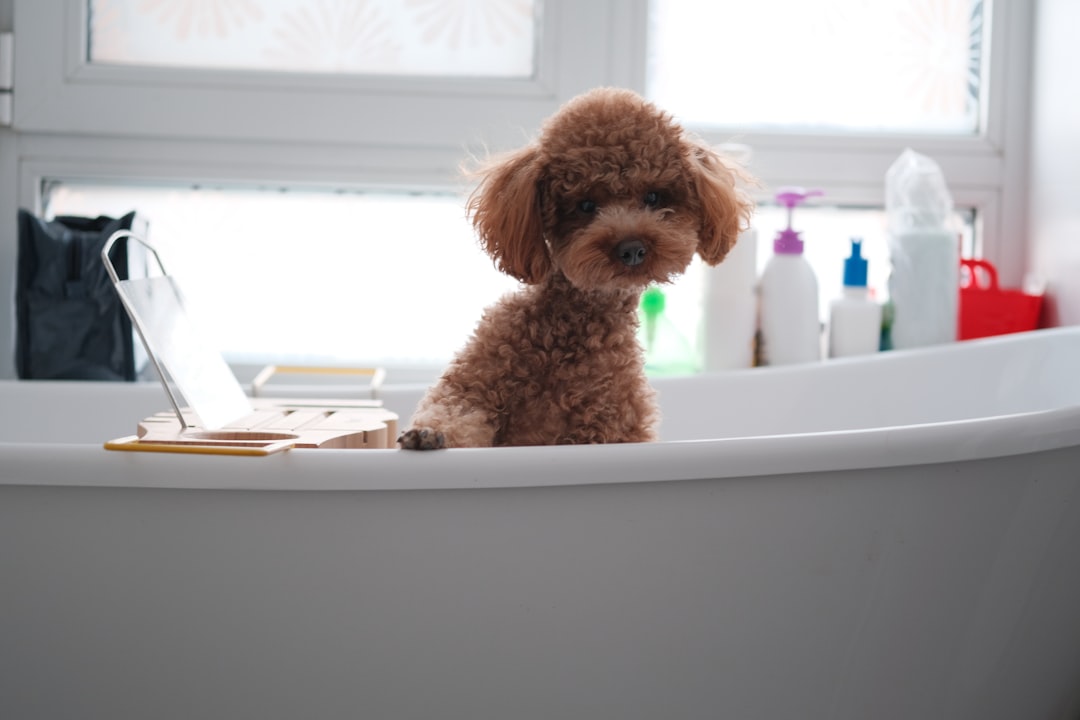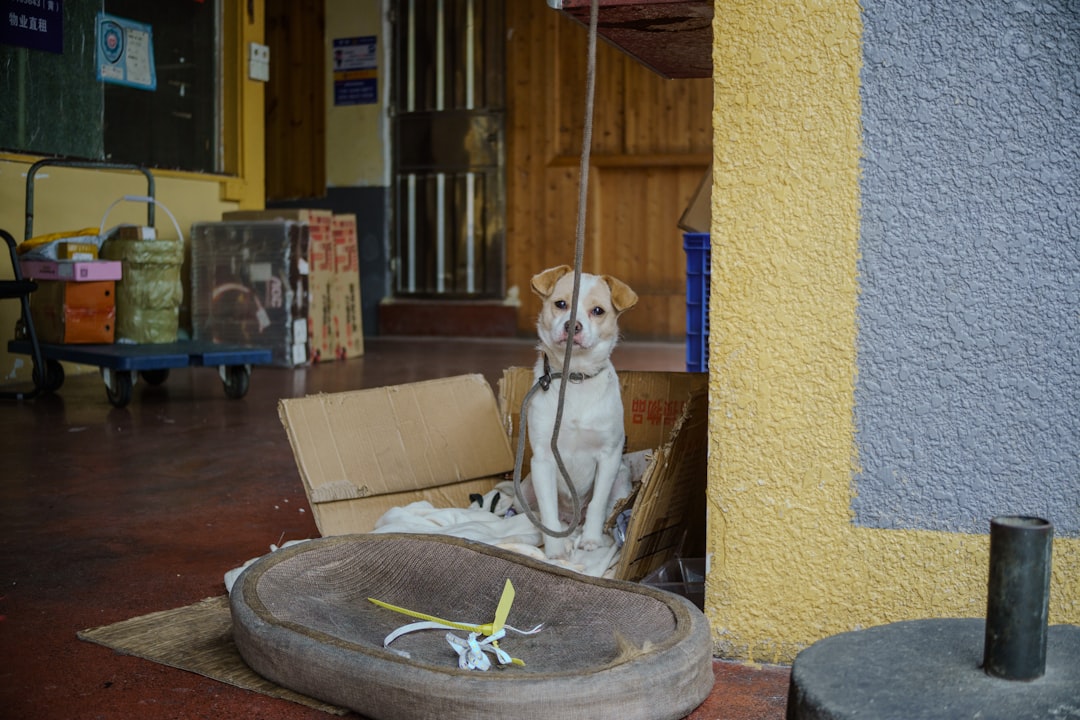

Engage prospects with a scan and streamline customer engagement with FREE QR code marketing tools by Sona – no strings attached!
Create a Free QR CodeFree consultation

No commitment

Engage prospects with a scan and streamline customer engagement with FREE QR code marketing tools by Sona – no strings attached!
Create a Free QR CodeFree consultation

No commitment
In today’s digitally driven world, QR codes are a strategic powerhouse for bridging offline interactions with online action. For dog wash station services, where self-service convenience and customer engagement are essential, QR codes provide instant pathways to book appointments, access instructions, capture feedback, and enroll in loyalty programs without app downloads or complex systems. The dog wash station market continues to expand as pet retailers and entrepreneurs adopt technologies that simplify workflows and elevate customer experience.
Traditional paper-based workflows often leave owners struggling to track high-value prospects. A pet parent might notice a promotion on a sign, but never complete the booking or sign-up after leaving the store. QR codes replace these outdated systems by capturing every interaction at the moment of intent. That converts previously invisible traffic into measurable data that supports offline attribution, retargeting, and better decision making.
This article explains how to integrate QR code solutions into dog wash station services to increase conversions, build high-value audiences, and deliver measurable ROI. Every scan can be turned into a growth signal, empowering operators and marketers to achieve operational excellence and sustainable business growth with tools like Sona QR for creation and Sona.com for attribution.

Operators frequently cite the frustration of missing out on walk-in customers who never convert. Many browse wash bays, read instructions, or scan pricing, then leave without booking or joining a program. This disconnect stems from limited visibility offered by paper flyers, static signage, and manual sign-up sheets. QR codes close this gap by turning every physical touchpoint into a direct call to action that feeds a digital journey: book now, save your spot, join rewards, or leave feedback. For campaign tactics and examples, see qr codes in marketing.
When deployed strategically, QR codes make the next step obvious and effortless. They replace slow, analog processes with one-scan actions that capture consented data and unlock follow-up. They also introduce trackability into areas that were previously blind, such as equipment panels, in-store posters, or receipts.
Modern QR solutions allow businesses to recognize and nurture interactions in real time. Instead of losing a potential customer after a brief glance at a sign, you can capture their interest in the moment, route them to a relevant experience, and measure the conversion path from scan to revenue.

A persistent challenge for dog wash station operators is the lack of visibility into customer engagement. Anonymous walk-ins may never join a loyalty program, and regulars might visit repeatedly without ever sharing feedback or receiving tailored offers. QR codes directly address these blind spots by placing digital gateways on every surface that matters: instructions, booking links, payment options, and safety guides. With one scan, customers get exactly what they need, and operators gain trackable engagement signals.
Dynamic QR codes are especially valuable in environments that change with seasons, promotions, or compliance updates. You can update a destination URL after printing, swap in a seasonal discount, or move from a booking page to a holiday hours notice without reprinting signage. That flexibility reduces waste, speeds iteration, and extends the life of your physical assets.
In a vertical that depends on transforming casual visits into loyal customers, the ability to connect a physical moment to a measurable digital action is a competitive advantage. QR codes deliver that connection at scale.
Service providers often rely on a mix of paper instructions, verbal guidance, and static promotions that are hard to measure and easy to ignore. QR formats bring order and speed to these interactions, making them simpler for customers and staff.
For dog wash stations, the most impactful formats tend to be web links and forms. Web links cover bookings, waitlists, equipment instructions, and promotions. Forms handle loyalty sign-ups and post-visit feedback. Wi-Fi access can support longer stays in multi-service facilities that include grooming or retail. Meanwhile, vCards help local managers build community partnerships with shelters or breed clubs.
With Sona QR, operators can generate these formats in one place, apply consistent branding, and manage destinations centrally.

Even with steady foot traffic, many dog wash stations struggle to capture intent and retarget high-fit customers. The key is to place QR codes where intent is highest and the next step is obvious. Every scan should unlock a relevant action that moves the customer forward.
By refining placements and CTAs, operators turn everyday surfaces into performance channels. Scan data shows which locations and messages drive high-intent behavior, making it easier to double down on what converts and phase out what does not.

A missed follow-up after a half-completed booking or an unsubmitted feedback form erodes loyalty and obscures what customers actually want. QR-first workflows reclaim these moments and turn micro-interactions into measurable outcomes.
When executed with dynamic codes and strong CTAs, these use cases often deliver measurable gains: 20 to 40 percent increases in feedback volume, 10 to 25 percent lifts in scan-to-booking conversions, and meaningful growth in repeat-visit frequency among loyalty members.
Each scan is a signal. It encodes intent, context, and timing. If you deploy multiple QR codes across touchpoints, you can automatically segment audiences by their behavior and route them into tailored follow-up flows.
Start by creating unique QR codes for each journey stage: awareness, consideration, and conversion. An awareness code on a community poster might offer a first-visit incentive. A consideration code at the bay could provide a how-to and invite a next-visit discount. A conversion code at checkout could finalize loyalty enrollment and capture preferences like dog size or coat type. Each scan writes a data point to the customer profile.
With Sona QR, each code becomes a smart entry point. Scan data flows to Sona.com and your CRM, where identity resolution and multi-touch attribution can connect the dots between a scan, a visit, a purchase, and long-term loyalty.
QR codes unify your physical presence with your digital efforts. They give you a common link that captures intent across posters, social content, receipts, and event activations, then routes that activity into measurable funnels.
In dog wash station services, these media types are common and cost effective. QR codes transform them from static promotions into responsive channels that reveal what works and what needs refinement. A centralized platform like Sona QR keeps every code, campaign, and data stream organized.
A clear process keeps your team aligned and your data clean. Use the following steps to move from idea to impact while preserving flexibility to iterate.
Start with the pain point that costs you the most revenue or satisfaction. Common targets include lost appointment bookings, low feedback collection, inconsistent loyalty enrollment, and uneven promotion performance. Tie each use case to a specific business outcome. For example: reduce abandoned bookings by 20 percent or increase loyalty sign-ups per 100 visitors by 30 percent.
Think in terms of a minimum viable flow, not a perfect system. For bookings, the flow might include a scan, a one-page booking form, a confirmation text, and a calendar invite. For feedback, it might be a three-question survey with a thank-you coupon. Resist the urge to cram multiple goals into one code. A single, clear action tends to convert best.
Choose between static and dynamic based on how often you need to update the destination and how much insight you need. Static codes are fine for fixed content like safety instructions that rarely change. Dynamic codes are better for any promotional or trackable campaign because they allow you to edit destinations, run A/B tests, and attribute scans across placements. With a QR code generator, dynamic codes are easy to manage at scale.
Consider security and governance early. Use branded short links with SSL and role-based access to manage who can edit destinations. If you plan to collect personal data, ensure you use a compliant form and provide a clear consent mechanism for email or SMS.
Design for clarity, not decoration. Your QR code should be visible at a short distance, with enough quiet space around it and sufficient contrast to ensure reliable scanning. Include a strong CTA directly adjacent to the code and consider adding a micro-screenshot of the destination to set expectations.
Test in real conditions. Scan the code from multiple angles and distances, in bright and dim lighting, and on both iOS and Android devices. If the code will be laminated or placed behind glass, test for glare and reflections.
Roll out QR codes in stages so you can learn and adapt. Start with a few high-traffic placements and monitor performance for one to two weeks. Then expand to additional surfaces and channels using the insights you gathered.
Train your team. Every staff member should know what each code does, where it leads, and how to promote it in customer conversations. A two-sentence script can be enough: If you scan that code you can grab a quick tutorial before you start and you will get a discount on your next wash.
Tie every code to a measurement plan. Track scan volume, unique scanners, scan-to-next-action rate, and downstream conversion such as bookings, enrollments, or redemptions. Use dashboards in Sona QR and your analytics platform to see what is working and where drop-offs occur.
Iterate continuously. If a code gets scans but few conversions, adjust the CTA or destination. Test a shorter form, a clearer value proposition, or a different incentive. If a placement underperforms, try a new location or larger print size.
A recurring pain point in dog wash operations is the inability to prove which signs, deals, or placements drive revenue. The right QR analytics setup closes this gap. You can attribute bookings and loyalty sign-ups to specific codes, identify which stations or stores perform best, and understand how offline interactions contribute to repeat visits.
With Sona QR and Sona.com, the chain of custody is clear. You capture scans with time, device, location, and campaign. You then sync that activity to your CRM, enrich profiles, and connect the dots using multi-touch models. That allows operators to view the role of a scan in context with ad clicks, website visits, and email engagement.
The result is a performance dashboard that goes beyond vanity metrics. You see how QR engagement contributes to utilization, revenue, and loyalty, then optimize spend accordingly.
QR programs thrive when they are simple to use, easy to measure, and consistently promoted. The following tips help maximize scan rates and ROI while aligning with how customers actually move through your space.
Creative deployment examples can spark adoption. Add a QR code to a dog-shaped window decal that says Scan for your first-wash deal. Print a code on a QR pet tag that clips to a leash, offering a free add-on with the next wash when the tag is scanned at checkout. These small touches turn everyday moments into measurable invitations.

Many operators see mysterious drop-offs during busy hours: customers show interest, then leave without converting. QR code-enabled campaigns help unpack these moments and provide real-time bridges to action.
These examples illustrate how QR codes eliminate friction, make intent measurable, and unlock creative ways to turn small interactions into repeatable revenue.
Dog wash station services are in the middle of a digital shift. Operators want to streamline workflows, increase utilization, and improve personalization, but they often lack clean data. QR strategies offer a practical bridge, converting physical interest into trackable digital actions while keeping costs low.
The trajectory is clear: QR adoption is becoming standard in competitive, tech-forward dog wash operations. The combination of speed, flexibility, and measurability aligns with the sector’s need to do more with lean teams and localized marketing.
QR codes are more than a shortcut; they are a strategic asset for dog wash station services. By transforming every brochure, sign, or wash bay into a measurable digital entry point, QR codes deliver instant engagement, connected booking journeys, and actionable data that convert interest into repeat business. Modern operators minimize the risk of lost high-value leads or missed upsell opportunities by making every customer touchpoint interactive and trackable.
Unified QR platforms like Sona QR and Sona.com make it possible to create branded codes, enrich customer data, update campaigns in real time, and attribute revenue accurately. These technology-driven approaches help you overcome persistent pain points and unlock the next phase of growth in your dog wash station operations. If you are getting started, launch a single use case such as scan-to-book at the bay, measure the lift, then expand to loyalty and feedback. Each step compounds into a smarter, more profitable customer journey. Start creating QR codes for free.
QR codes have transformed dog wash station services from simple self-service points into dynamic, measurable growth channels. Whether it’s attracting new pet owners, enhancing customer convenience, or enabling seamless payments and loyalty rewards, QR codes replace outdated processes with instant, mobile-friendly actions that capture real-time engagement data—turning every wash station into a powerful conversion driver. Imagine knowing exactly which promotions or service features motivate pet owners to return again and again.
With Sona QR, you can create dynamic, trackable QR codes in seconds, update campaigns instantly without costly reprints, and connect every scan directly to revenue and customer insights. No missed opportunities, just smarter, more profitable dog wash station services that build loyalty and boost sales.
Start for free with Sona QR today and turn every scan into a loyal customer, a repeat visit, or a valuable referral.
Begin by identifying key pain points such as lost bookings or low feedback, then implement QR code solutions for booking, loyalty, and feedback to create a seamless customer journey and measurable outcomes.
While the article focuses on QR codes, cashless payment systems integrated with QR codes streamline transactions, reduce manual errors, and improve operational efficiency by enabling quick, trackable payments.
QR codes provide instant access to booking, instructions, feedback forms, and loyalty programs at high-intent locations, turning physical touchpoints into measurable digital actions that increase conversions and repeat visits.
Use QR codes to provide up-to-date safety and sanitation protocols, equipment instructions, and troubleshooting tips, which reduce misuse and support compliance without the need for frequent reprinting of materials.
Costs include investing in QR code platforms like Sona QR, creating dynamic codes, printing materials for placements, and staff training, but digital processes reduce ongoing expenses related to paper forms and manual workflows.
Use Sona QR's trackable codes to improve customer acquisition and engagement today.
Create Your FREE Trackable QR Code in SecondsJoin results-focused teams combining Sona Platform automation with advanced Google Ads strategies to scale lead generation

Connect your existing CRM

Free Account Enrichment

No setup fees
No commitment required

Free consultation

Get a custom Google Ads roadmap for your business






Launch campaigns that generate qualified leads in 30 days or less.
